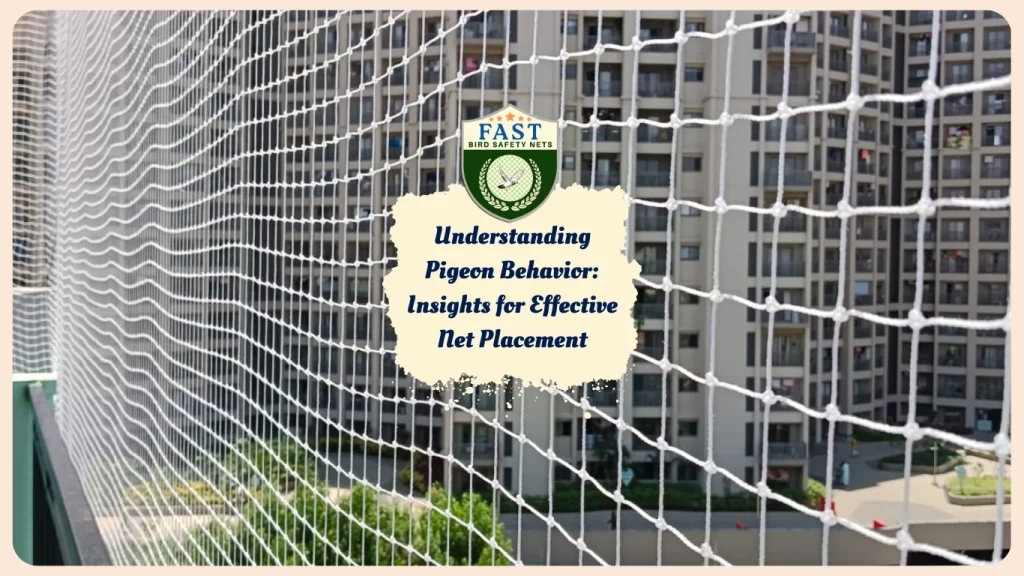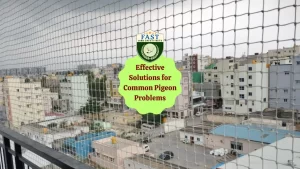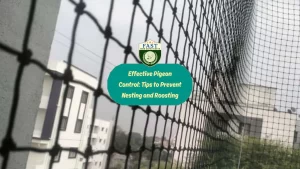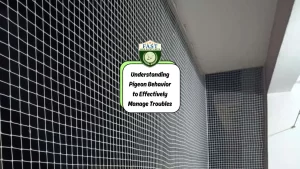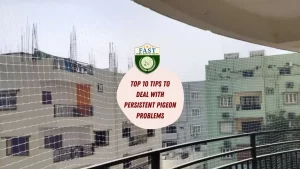Pigeons are ubiquitous urban birds known for their adaptability and persistent presence in cities like Hyderabad. While their cooing may add charm to the urban landscape, their droppings and nesting habits can pose significant challenges for residents. Effective pigeon control strategies often involve the strategic placement of pigeon nets. In this article, we delve into the intricacies of pigeon behaviour to provide insights for placing nets effectively and minimizing pigeon-related issues in Hyderabad.
1. Understanding Pigeon Behaviour: Before implementing pigeon control measures, it’s essential to understand the behaviour patterns of these birds. Pigeons are highly social creatures that thrive in urban environments due to the abundance of food sources and shelter. They are known to roost and nest in elevated areas such as rooftops, ledges, and balconies. Additionally, pigeons exhibit strong homing instincts, making them return to familiar roosting sites repeatedly.
2. Identifying Roosting and Nesting Sites: To effectively deter pigeons, it’s crucial to identify their preferred roosting and nesting sites. Common locations include building ledges, window sills, eaves, and air conditioning units. Pigeons are attracted to flat surfaces that provide shelter from the elements and a vantage point for observation. By identifying these areas, homeowners can target their efforts towards installing nets strategically.
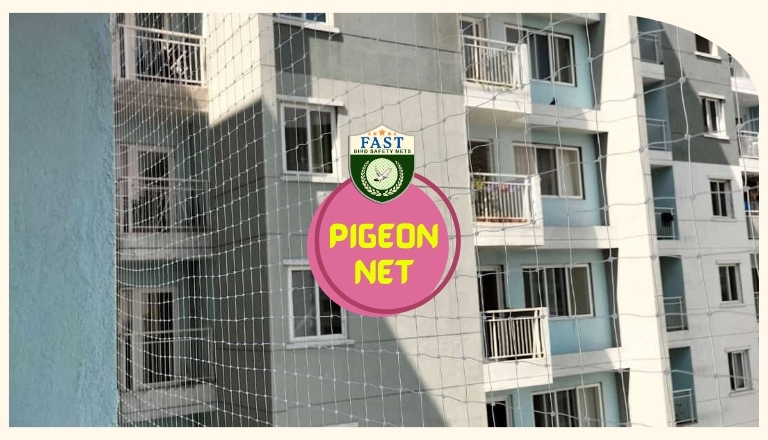
3. Choosing the Right Netting Material: Selecting the appropriate netting material is vital for ensuring the effectiveness of pigeon control efforts. Opt for durable, UV-resistant netting with small mesh sizes to prevent pigeons from accessing roosting and nesting sites. Additionally, consider the color and visibility of the netting to ensure it blends seamlessly with the building’s aesthetics while maintaining functionality.
4. Strategic Placement of Pigeon Nets: Effective placement of pigeon nets is key to preventing access to roosting and nesting sites. Focus on covering areas where pigeons congregate most frequently, such as ledges, balconies, and rooftop perimeters. Ensure that the netting is securely fastened and extends beyond the targeted area to prevent pigeons from accessing adjacent spaces.
5. Deterrents and Scare Tactics: In addition to pigeon nets, incorporating deterrents and scare tactics can enhance the effectiveness of pigeon control measures. Options include ultrasonic devices, reflective surfaces, and predator decoys, which create an inhospitable environment for pigeons and discourage them from roosting or nesting in the vicinity.
6. Maintenance and Monitoring: Regular maintenance and monitoring are essential to ensure the long-term effectiveness of pigeon control measures. Inspect the netting periodically for signs of wear or damage, and promptly repair any issues to prevent pigeons from exploiting vulnerabilities. Additionally, monitor pigeon activity in the area and adjust control strategies as needed to address emerging challenges.
7. Collaboration and Community Engagement: Addressing pigeon-related issues often requires collaboration and community engagement. Encourage neighbors and local authorities to implement pigeon control measures collectively to achieve a more comprehensive and sustainable solution. Educate residents about the importance of proper waste management and the risks associated with feeding pigeons to minimize attractants in the environment.
8. Seeking Professional Assistance: For complex pigeon control challenges or large-scale infestations, seeking professional assistance from pest control experts or wildlife management professionals may be necessary. These professionals have the expertise and resources to develop customized pigeon control strategies tailored to the specific needs of the property and environment.
Conclusion: Understanding pigeon behavior is essential for implementing effective pigeon control measures and minimizing pigeon-related issues in urban environments like Hyderabad. By leveraging insights into pigeon behavior, homeowners can strategically place pigeon nets to deter roosting and nesting activities, creating a safer and more hygienic living environment. With proactive measures, collaboration, and community engagement, residents can mitigate the impact of pigeons and enjoy a cleaner, more peaceful urban landscape.

